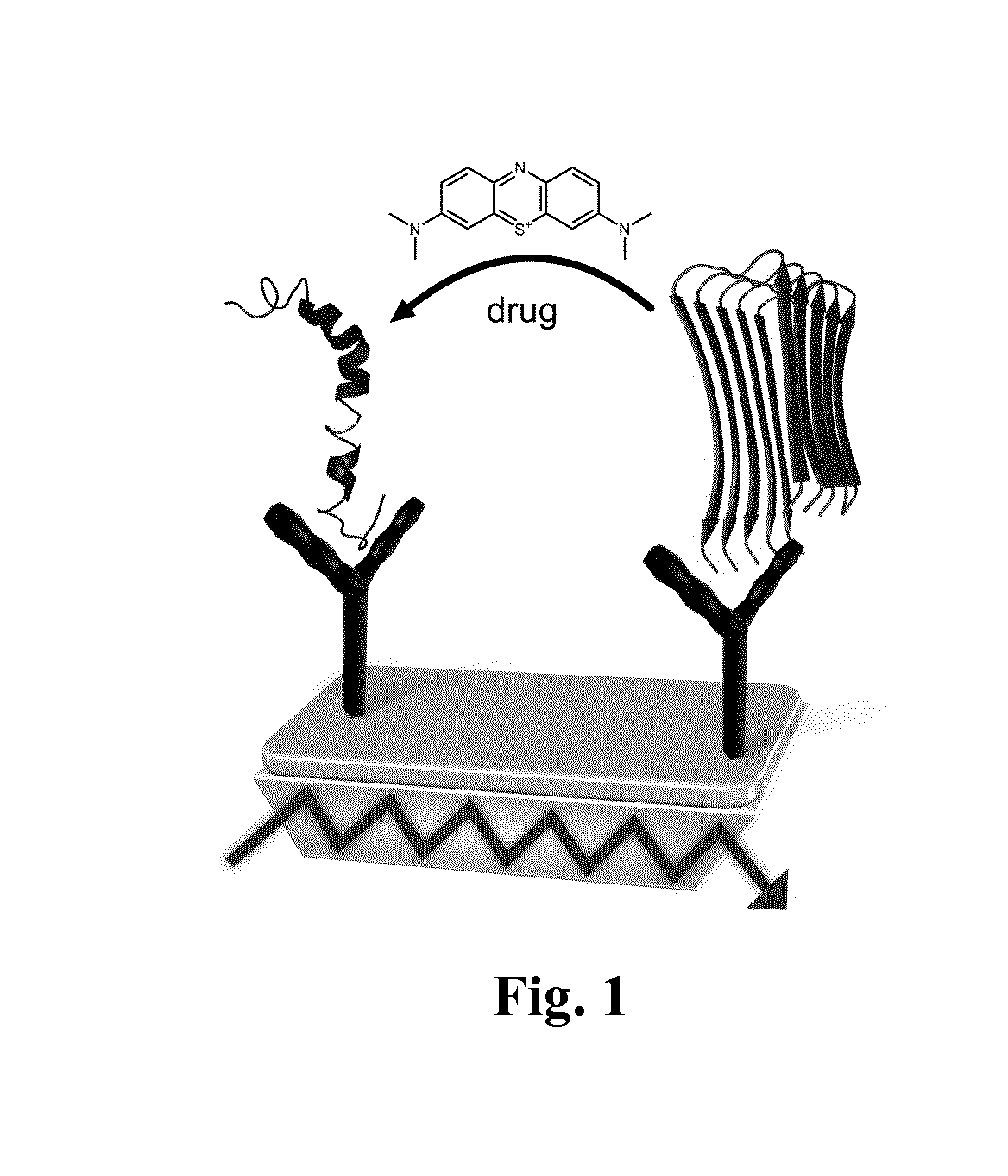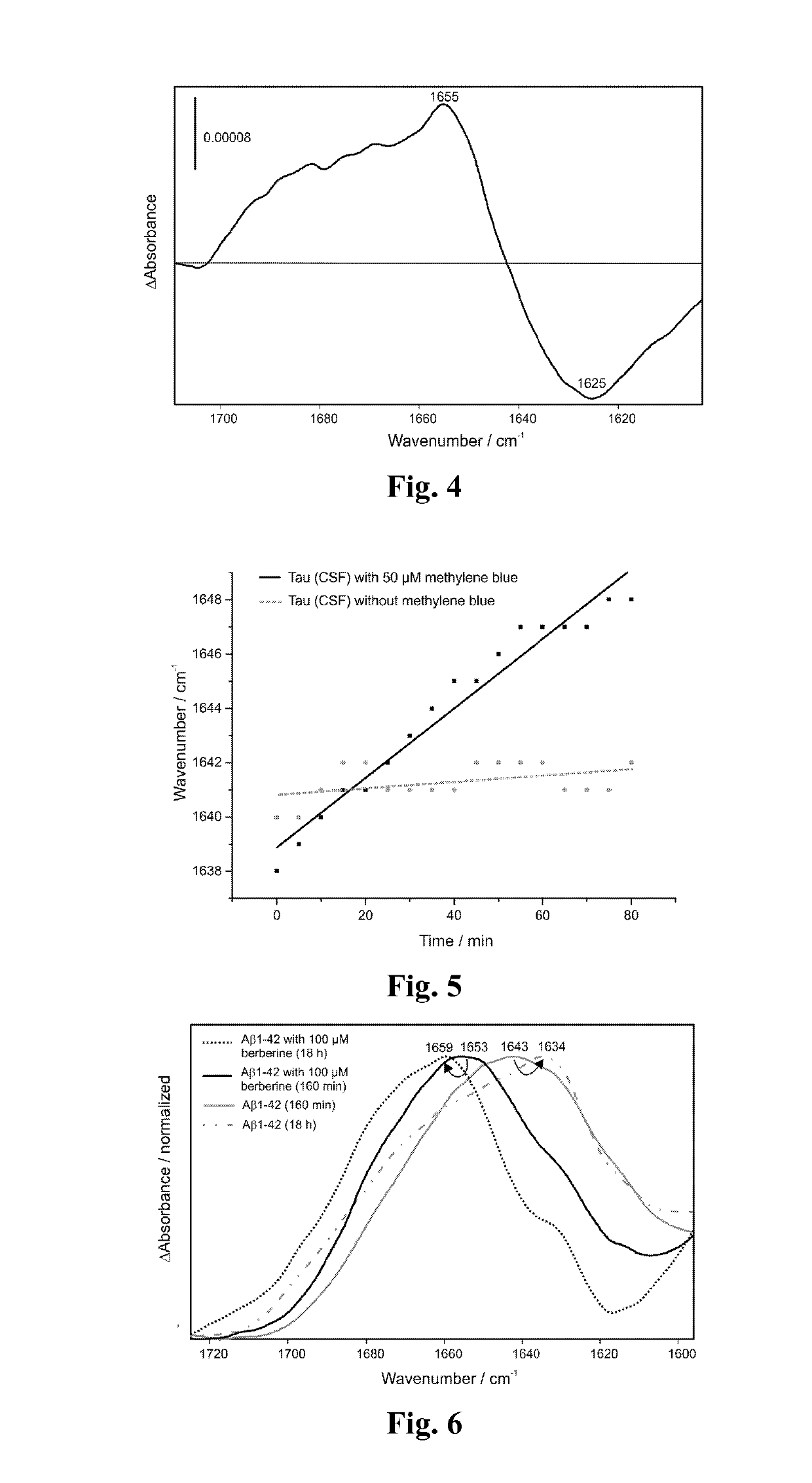Method for the preselection of drugs for protein misfolding diseases
a protein misfolding and drug technology, applied in the field of alzheimer's disease treatment, can solve the problems of no spectral or structural resolution, brain damage already irreversible, and difficulty in drug development against alzheimer's disease, and achieve the effect of increasing -helix and reducing -sh
- Summary
- Abstract
- Description
- Claims
- Application Information
AI Technical Summary
Benefits of technology
Problems solved by technology
Method used
Image
Examples
example 1
Blue “Cures” Alzheimer's Disease In Vitro
[0042]To monitor the drug effect of methylene blue the invented method was employed. We previously invented an immuno-ATR sensor, which differentiates AD with an accuracy of 90% based on CSF and 84% based on blood plasma analyzes (Nabers et al., Anal. Chem. 88(5):2755-62 doi:10.1021 / acs.analchem.5b04286 (2016)). First, we employed silane chemistry to modify the germanium surface (Schartner et al., JACS 135(10):4079-87 doi:10.1021 / ja400253p (2013)). Second, the monoclonal IgG1 antibody Tau-5 was covalently immobilized on the germanium surface. The immobilization is completed after 2 hours as presented in FIG. 2A by reaching an absorbance of 5 mOD. After washing the surface with binding buffer 1 the antibody remains stable (FIG. 2A). To obtain a highly specific surface the saturation with casein is crucial (Nabers et al., J. Biophotonics 9(3):224-34 doi:10.1002 / jbio.201400145 (2016)). Finally, a complex sample such as cerebrospinal fluid (CSF) ...
example 4
does not Affect Tau
[0045]Furthermore, we studied the effect of berberine on the Tau protein (from CSF) under the same conditions as for methylene blue (FIG. 8). The amide band and its maximum are not affected by the berberine treatment, which indicates that berberine has no significant effect on the Tau protein in comparison to methylene blue (FIG. 3 and FIG. 8).
PUM
 Login to View More
Login to View More Abstract
Description
Claims
Application Information
 Login to View More
Login to View More - R&D
- Intellectual Property
- Life Sciences
- Materials
- Tech Scout
- Unparalleled Data Quality
- Higher Quality Content
- 60% Fewer Hallucinations
Browse by: Latest US Patents, China's latest patents, Technical Efficacy Thesaurus, Application Domain, Technology Topic, Popular Technical Reports.
© 2025 PatSnap. All rights reserved.Legal|Privacy policy|Modern Slavery Act Transparency Statement|Sitemap|About US| Contact US: help@patsnap.com



